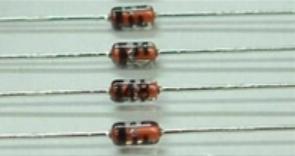Date:2025-07-10 Categories:Product knowledge Hits:345 From:Guangdong Youfeng Microelectronics Co., Ltd
3、 Working principle:
The working principle of switch diodes is based on the characteristics of PN junctions. When forward biased, current can pass through the PN junction and form a conducting state; When reverse biased, the PN junction will generate a depletion region, preventing current from passing through and forming a cutoff state. By controlling the variation of forward or reverse bias voltage, the control of switching diodes can be achieved.
4、 Type:
According to different application requirements, switch diode can be divided into different types:
1. Ordinary switch diode: has low voltage and current carrying capacity, suitable for low voltage and low current applications.
2. Rectification type switch diode: It has high voltage and current bearing capacity and is suitable for high voltage and high current rectification circuits.
3. Reverse switching diode: It has a special structural design that allows it to only conduct under reverse voltage, making it suitable for specific application scenarios.
4. Enhanced Switching Diode: Optimized design based on ordinary switching diodes, with higher voltage tolerance, current tolerance, and switching speed.
5、 Operating procedures:
1. Firstly, confirm the positive and negative terminals of the switch diode. Generally speaking, the positive pole of a switching diode is labeled as the anode (Anode), and the negative pole is labeled as the cathode (Cathode). Ensure proper connection.

Previous: Classification, Structure, and Principle of MOSFET